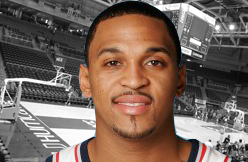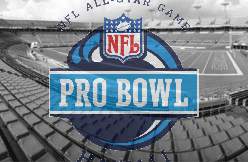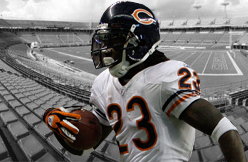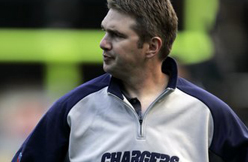

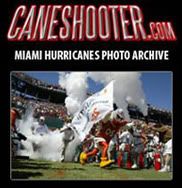
CLICK HERE TO ORDER!

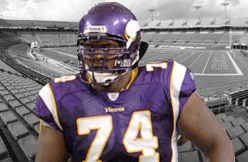
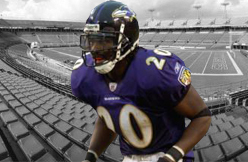
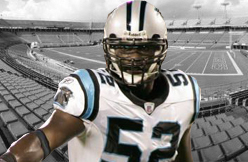
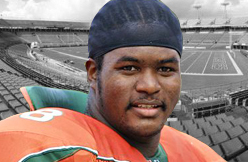
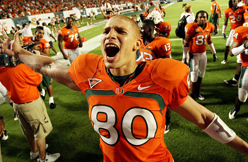

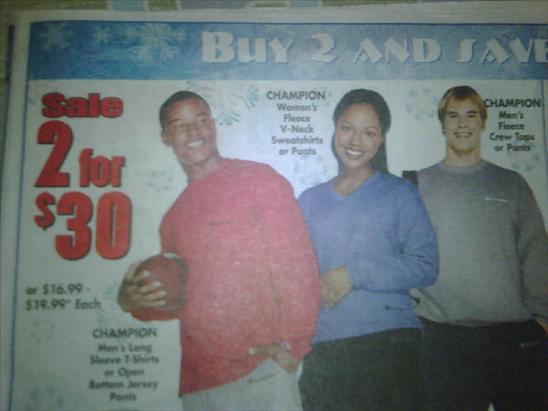
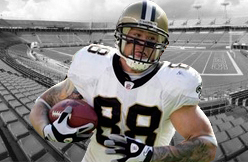

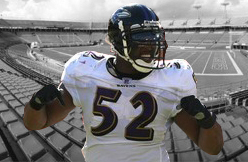


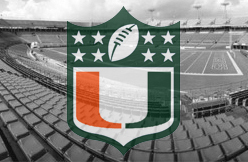

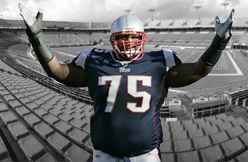






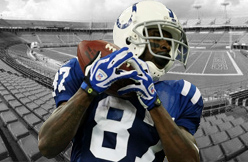




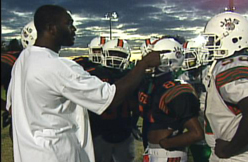
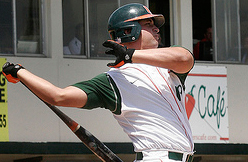
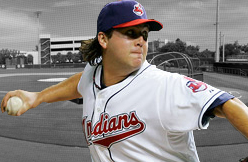
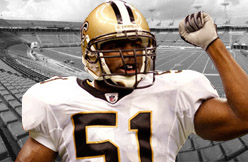
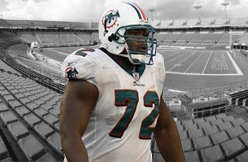


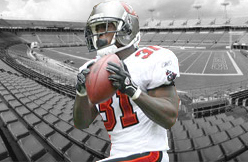


age | year | team | teammates | ANYA index | |
25 | 1988 | tam | 29.0 | 75 | |
26 | 1989 | tam | 27.7 | 89 | |
27 | 1990 | tam | 35.6 | 97 | |
28 | 1991 | tam | 33.3 | 78 | |
29 | 1992 | tam | 34.0 | 96 | |
30 | 1993 | cle | 41.0 | 116 | |
31 | 1994 | cle | 42.7 | 98 | |
32 | 1995 | cle | 41.2 | 119 | |
33 | 1996 | rav | 52.9 | 117 | |
34 | 1997 | rav | 41.0 | 99 | |
35 | 1998 | nyj | 59.0 | 129 | |
37 | 2000 | nyj | 46.3 | 96 | |
38 | 2001 | nyj | 50.7 | 97 | |
41 | 2004 | dal | 48.0 | 99 |
How bad were Vinny Testaverde's teammates early in his career? Well, Mark Carrier was a starting wide receiver, and he had a solid career. Paul Gruber was a rookie left tackle in 1988, and would go on to start for 12 seasons in Tampa, but never made a pro bowl. After that, well, there wasn't much that could be considered more than replacement level now that we can look back at history and see what those players did (or in this case, didn't do) for the rest of their careers. None of the quarterbacks who started their career since 1970 and made the Hall of Fame played a single season with a starting offensive group as bad as those first two in Tampa for Testaverde. Steve Young played for the same organization two years earlier, and with an offensive group with a 37.3 career AV average (slightly better than any Testaverde played with in Tampa), posted an 83 ANYA index score at age 25. You might be tempted to think that Dallas in 1989 was worse. They weren't good, but that offensive team had a 37.8 career AV average, and Aikman was far worse as a rookie than Testaverde was over his Tampa career.
Okay, so we can't really compare Testaverde's early part of his career because no Hall of Famer played with so many bad players during his career. We also can't see what Testaverde would have done if he played a team like the Air Coryell Chargers or the San Fransisco 49ers of the late 80's and early 90's, because he never played with a team that approached that many Hall of Famers or near Hall of Famers at the other offensive positions. That leaves us with what's left, the other seasons for Testaverde in his prime (Cleveland, Baltimore and the Jets) compared to Hall of Fame quarterbacks in seasons where they had similar supporting casts to Testaverde during their primes. I'm going to define "prime" as seasons between the ages of 26 and 35 for Testaverde as well as the following quarterbacks: Terry Bradshaw, Ken Anderson, Dan Fouts, Joe Montana, John Elway, Jim Kelly, Dan Marino, Steve Young, Troy Aikman, and Brett Favre. Everyone but Anderson and Favre is in the Hall of Fame, and I'm including Anderson since he seems to be everyone's choice for Hall of Fame snub. I didn't feel I could include guys like Manning and Brady since their prime years are still occurring, and we don't have an accurate gauge on the careers of their teammates since so many are still active.
Testaverde's best supporting cast was easily in 1998 at age 35 with the New York Jets. That offensive starting team had a career AV average of 59.0. Curtis Martin was the best back that Testaverde played with, Keyshawn Johnson was the best lead receiver he had, and Kevin Mawae was at center. The Jets also had Keith Byars as a veteran receiving fullback, a solid complement at the other receiver position in Wayne Chrebet, and the best tight end (Kyle Brady) that Testaverde would play with until he was a 41 year old throwing to a 21 year old rookie Jason Witten in Dallas (let that sink in). Overall, it was a pretty good offensive group though not historically elite. With that group, at age 35, Testaverde went 12-1 in the regular season and the Jets advanced to the championship game, and Testaverde posted a 129 ANYA index rating. To explain what that is, 100 is an average performance. Every 15 points above or below 100 is equal to one standard deviation better than or worse than the league average. Thus, Testaverde was almost two standard deviations better than the league average in 1998.
How did the elite quarterbacks do with a similar supporting cast to the 1998 Jets during their primes? Here is every season by those quarterbacks with an offensive team career AV average within 3 points of the 1998 Jets.
player | year | team | age | ANYA index | |
anderson | 1983 | 62.0 | 34 | 108 | |
bradshaw | 1979 | 61.7 | 31 | 119 | |
kelly | 1993 | 61.6 | 33 | 106 | |
bradshaw | 1978 | 61.4 | 30 | 127 | |
montana | 1984 | 61.0 | 28 | 137 | |
anderson | 1984 | 60.8 | 35 | 104 | |
aikman | 1997 | 60.8 | 31 | 100 | |
fouts | 1979 | 60.5 | 28 | 119 | |
aikman | 1998 | 60.0 | 32 | 122 | |
bradshaw | 1981 | 59.9 | 33 | 124 | |
bradshaw | 1982 | 59.9 | 34 | 111 | |
fouts | 1984 | 59.1 | 33 | 111 | |
moon | 1990 | 57.9 | 34 | 127 | |
anderson | 1980 | 57.4 | 31 | 85 | |
fouts | 1980 | 57.3 | 29 | 124 | |
bradshaw | 1975 | 57.3 | 27 | 114 | |
kelly | 1994 | 57.0 | 34 | 99 | |
moon | 1991 | 56.1 | 35 | 110 | |
HOF AVERAGE | 59.5 | 31.8 | 113.7 |
Of those 18 comparable seasons, the only one with a higher ANYA score was a 28-year old Joe Montana in 1984. Testaverde was almost three years older than the average player in this group, and over a full standard deviation better. This is only one season, though, so let's dig further.
The second best supporting cast that Testaverde played with during his prime was the 1996 Baltimore Ravens (the first season in Baltimore). The reason this season stands out above the other Cleveland/Baltimore years is because the Ravens dug up a 34 year old Earnest Byner at RB, and added rookie Jonathan Ogden along with Tony Jones on the left side of the line (they would let Jones go the next year and move Ogden to LT). The receiving corp of Derrick Alexander and Michael Jackson was very good for Testaverde's career standards, but not for other elite quarterbacks. Still, with this group, at age 33, Testaverde posted a 117 ANYA rating. When Football Outsiders went back and broke down the play by play from the 1996 season, they concluded that Baltimore had the #1 offense that season (and the second worst defense). So, how did the Hall of Famers do with a similar supporting cast to that 1996 Baltimore team?
player | year | team | age | ANYA index | |
marino | 1992 | 54.9 | 31 | 117 | |
marino | 1994 | 54.9 | 33 | 118 | |
aikman | 2000 | 54.5 | 34 | 82 | |
marino | 1993 | 54.4 | 32 | 133 | |
fouts | 1977 | 54.0 | 26 | 113 | |
moon | 1988 | 54.0 | 32 | 128 | |
aikman | 1999 | 53.8 | 33 | 105 | |
favre | 2002 | 53.2 | 33 | 107 | |
moon | 1987 | 53.1 | 31 | 108 | |
kelly | 1987 | 52.5 | 27 | 106 | |
marino | 1995 | 52.1 | 34 | 119 | |
anderson | 1975 | 51.8 | 26 | 129 | |
fouts | 1985 | 51.7 | 34 | 127 | |
fouts | 1986 | 51.6 | 35 | 98 | |
moon | 1989 | 51.5 | 33 | 116 | |
kelly | 1986 | 51.2 | 26 | 109 | |
favre | 2001 | 50.4 | 32 | 125 | |
montana | 1982 | 50.2 | 26 | 117 | |
marino | 1990 | 49.8 | 29 | 113 | |
favre | 2000 | 49.6 | 31 | 102 | |
bradshaw | 1980 | 49.6 | 32 | 112 | |
marino | 1991 | 49.2 | 30 | 117 | |
favre | 2004 | 49.2 | 35 | 119 | |
favre | 2003 | 49.1 | 34 | 107 | |
HOF AVERAGE | 51.9 | 31.2 | 113.6 |
You might notice that the two seasons that Testaverde made a pro bowl coincide with the two seasons that, according to career AV, he had his two best offensive starting units. He wasn't quite as dominant this season compared to the Hall of Famers, but he still outperformed the average and was almost two years older than the average HOF with a similar supporting unit.
In the other four seasons, in Cleveland and Baltimore, his offensive teams might generously be described as slightly below average. There were some good parts and also some holes, and certainly no Hall of Famers. Tony Jones, and one season of a disgruntled Andre Rison, were the best players according to career AV that Testaverde played with before he turned 33. In those four seasons (1993-1995, 1997), he posted two basically average statistical years, and two very good ones where he was more than a standard deviation better than the league. The average ANYA index score for those four seasons was 108, or about half a standard deviation better than average. Very few of the Hall of Famers played with offensive units that were this mediocre, and here's how they did:
player | year | team | age | ANYA index | |
favre | 1999 | 45.4 | 30 | 100 | |
anderson | 1976 | 45.2 | 27 | 112 | |
marino | 1989 | 44.9 | 28 | 112 | |
favre | 1998 | 44.9 | 29 | 110 | |
favre | 1995 | 44.8 | 26 | 130 | |
elway | 1986 | 44.6 | 26 | 110 | |
elway | 1988 | 44.5 | 28 | 96 | |
moon | 1985 | 44.3 | 29 | 91 | |
anderson | 1978 | 43.7 | 29 | 90 | |
favre | 1996 | 43.1 | 27 | 121 | |
elway | 1993 | 42.3 | 33 | 117 | |
elway | 1992 | 40.9 | 32 | 86 | |
moon | 1984 | 38.9 | 28 | 103 | |
elway | 1991 | 38.8 | 31 | 103 | |
HOF AVERAGE | 43.2 | 27.1 | 105.8 |
Yet again, Testaverde was older than the HOF comparables, and outperformed them slightly when playing with similar supporting casts.
What conclusions can we draw from this? I suspect that saying that Testaverde was better than Hall of Fame contemporaries like Jim Kelly and Troy Aikman would feel controversial. At some level, we know that teammates matter, and that quarterback statistical performance is highly variable precisely because there are so many other moving parts that contribute to the final numbers. But I'm not sure that we will be fully comfortable with the results if we could ever more accurately measure those contributions.
Testaverde never played with a receiver better than Keyshawn Johnson, let alone a receiving combo like Rice/Taylor or Rice/Owens or Reed/Lofton or Joiner/Winslow/Chandler. He got one year of Curtis Martin (and we saw how he performed), whereas a lot of the Hall of Famers played with elite running backs for a good chunk of their primes. He got one season of Jonathan Ogden as a rookie (and we saw how he performed), whereas almost all of the Hall of Famers played with lines that had four or five linemen that would prove to start 10+ years in the league, during those quarterbacks' best seasons.
I don't think Testaverde peaked late--I think he just had his best teammates late in his career. At age 26, he took a historically bad offensive unit, and put up merely below average passing stats. He was probably already pretty good by then. In his last year in Tampa Bay at age 29, he took a clearly sub-par offense and put up almost league average numbers. Still, the quarterback gets blamed and he was sent away, though history shows that he was clearly not the problem. His first year in Cleveland at age 30, he took a below average offensive cast and produced a well above average passing performance, and in my opinion, that was his peak year once we account for his teammates. Over the next several years, he would continue to produce numbers that, once you account for his teammates, shows a very good quarterback. And when he got to finally play with above average offenses that had multiple good players, he was among the league leaders, despite being at an age when some of his Hall of Fame contemporaries were slowing down when their offenses went from elite to merely above average.
I submit that Testaverde didn't discover some fountain of youth or manage to delay the aging process. He was just really good. And when you are really good at age 30-35, you can afford to lose a little and still be able to play in the NFL to age 40. I can't help but wonder what would have happened if Testaverde had managed to end up with an offense that had a few more good players when he was entering his late 20's. My guess is that he would be practicing his Canton speech.
Click here to order Vinny Testaverde’s proCane Rookie Card.
